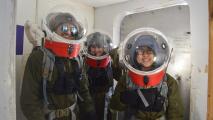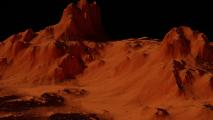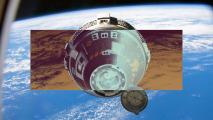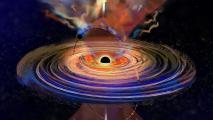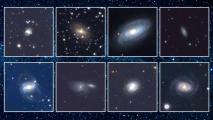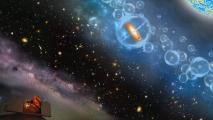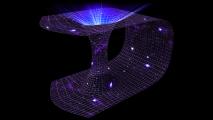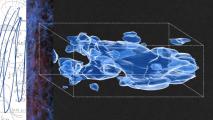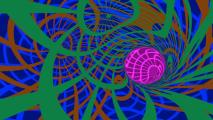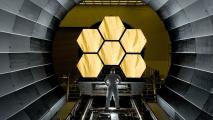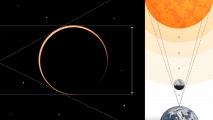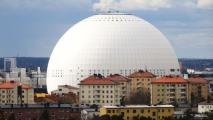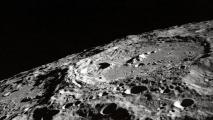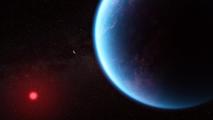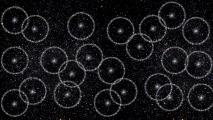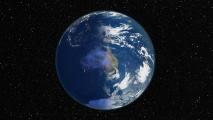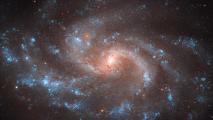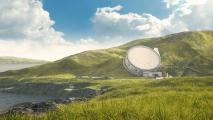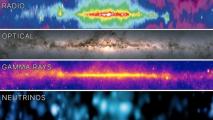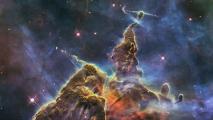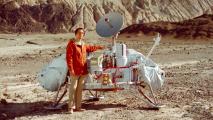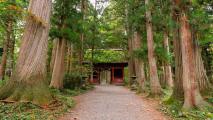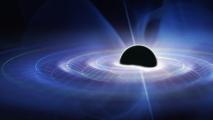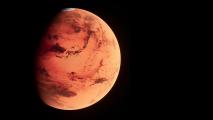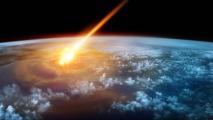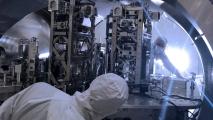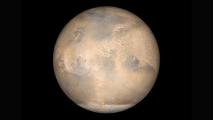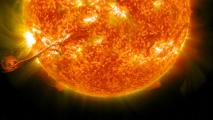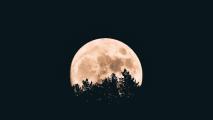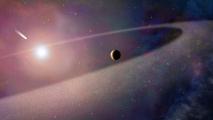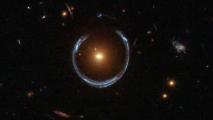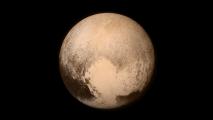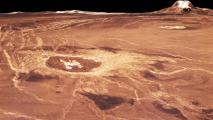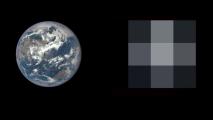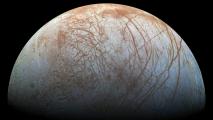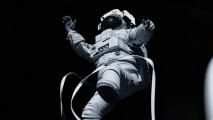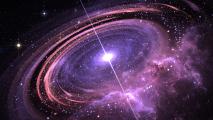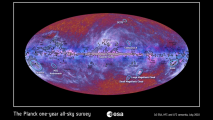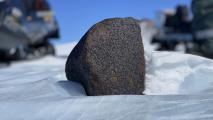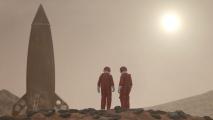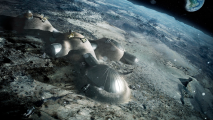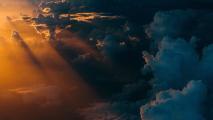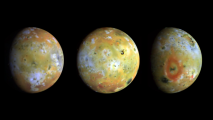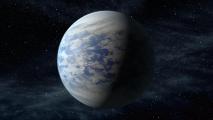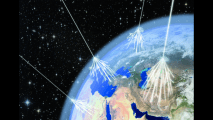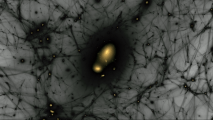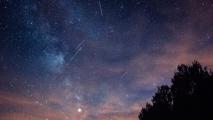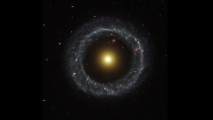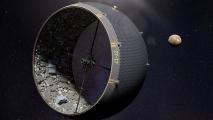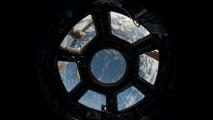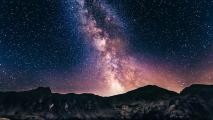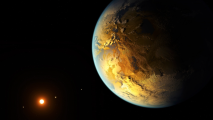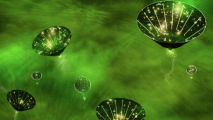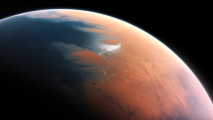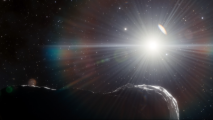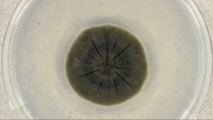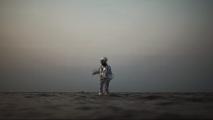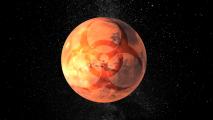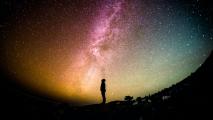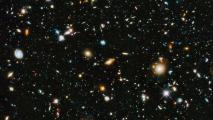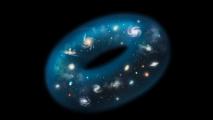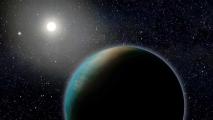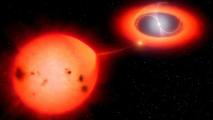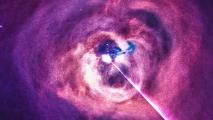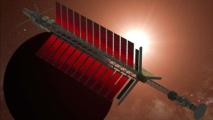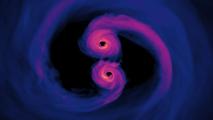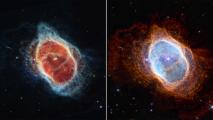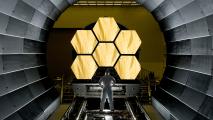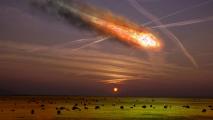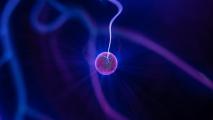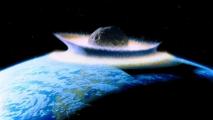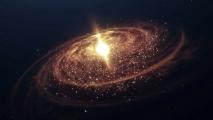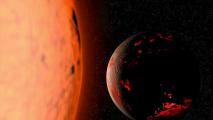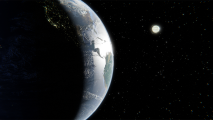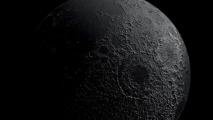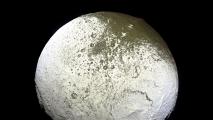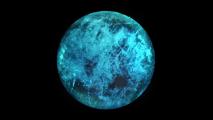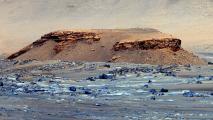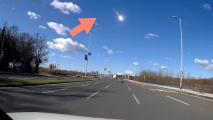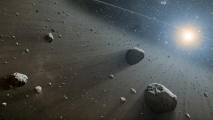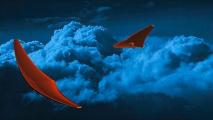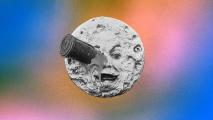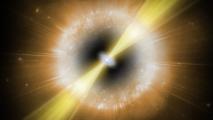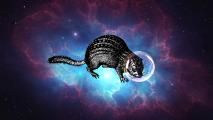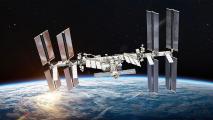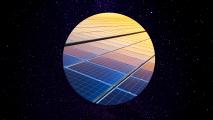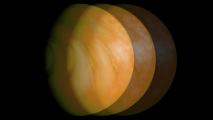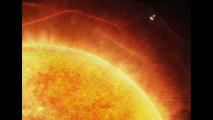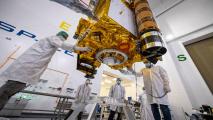Field: Outer Space
Life on Mars, together
Researchers spent two weeks at the Mars Desert Research Station conducting an analog mission for potential future trips to Mars.
NASA hopes private space companies can rescue its $11 billion Mars rock mission
If this ambitious NASA mission unraveled, scientists would lose their chance to learn much more about the red planet.
Boeing’s Starliner spacecraft was set to launch on May 6 — but was delayed again
Boeing’s Starliner launch – delayed again – will be an important milestone for commercial spaceflight if it can manage to launch.
Persistent “hiccups” in a far-off galaxy draw astronomers to new black hole behavior
Scientists have found a large black hole that “hiccups,” giving off plumes of gas, revealing another black hole.
Astronomers spot 18 black holes gobbling up nearby stars
Scientists have identified 18 new tidal disruption events (TDEs) — when a nearby star is tidally drawn into a black hole and ripped apart.
What was it like when supermassive black holes arose?
At the center of nearly every massive galaxy is a supermassive black hole ranging from millions to tens of billions of solar masses.
Google’s quantum computer suggests that wormholes are real
Until recently, wormholes were considered a mathematical curiosity, but Google's quantum computer suggests that wormholes might be real.
Scientists rule out a popular alternative theory to dark matter
A passionate minority deny the existence of dark matter and embrace MOND (Modified Newtonian Dynamics) to explain the observations.
“Singularities don’t exist,” claims black hole pioneer Roy Kerr
Using a powerful mathematical argument, black hole expert Roy Kerr argues that singularities shouldn't physically exist. He may be right.
Is the Universe infinite?
The limits to which we can observe the Universe are set by three things: the rate of expansion, the time since the Big Bang, and the speed of light.
Explore JWST’s deepest views ever for yourself
If you want to observe the Universe more deeply than ever before, simply point your high-powered observatory at the same region of sky.
The 2023 annular eclipse will have huge consequences 6 months later
Only twice a year are the conditions right for the Sun, Earth, and Moon to align in space: creating conditions for either solar or lunar eclipses.
There’s an entire solar system hiding inside Sweden
The Avicii Arena in Stockholm is the world’s largest spherical building and the center of the world’s largest scale model of our solar system.
Chandrayaan-3’s measurements of sulfur open the doors for lunar science and exploration
Data from Chandrayaan-3’s rover showed the lunar soil contained the expected metal elements, but also an unexpected surprise – sulfur.
Why astronomers are excited about carbon dioxide and methane in the atmosphere of an alien world
Scientists reported chemical traces in the atmosphere of planet K2-18b, including a substance which on Earth is only produced by living things.
Spending time in space can harm the human body − but scientists are working to mitigate these risks before we go to Mars
With NASA planning more missions to space in the future, scientists are studying how to mitigate health hazards that come with space flight.
Astronomers spot the first “bounce” in our Universe
Imprinted in the structure of the universe are "bouncing" signals from early on: where gravitating normal matter was pushed out by radiation.
Evidence suggests the world’s largest known asteroid impact structure is buried deep in southeast Australia
After years of asteroid impact research, experts think the world’s largest known impact structure is buried deep in the earth in Australia.
SpinLaunch will hurl payloads into orbit, cutting the cost of launch by 20x
Rockets are big because they require enormous amounts of fuel. SpinLaunch’s method does away with much of that by hurling payloads into space.
“Ghostly” neutrinos help us see our Milky Way as never before
A unique photograph of the Milky Way galaxy was captured using the IceCube detector, which observes high-energy neutrinos from space.
Why aliens are likely to be AI
Fundamental biological limitations will make long-distance space travel all but impossible for organisms. AI is more suitable.
5 revolutionary cosmic ideas that turned out to be wrong
These ideas could have revolutionized our concept of the Universe, but since evidence paves the road to reality, we've had to abandon them.
Time has some fundamental differences from every other dimension
While spacetime itself is four dimensional, it can be decomposed into three spatial dimensions and one time dimension.
NASA may have accidentally killed the only life we ever found on Mars 50 years ago
Life may have been discovered on Mars almost 50 years ago, but it could have been unintentionally destroyed.
World’s oldest trees reveal the largest solar storm in history
One of the greatest threats to all our infrastructure is a solar storm, which has the potential to cause a multi-trillion dollar disaster.
Astronomers use dead stars to measure gravitational waves produced by ancient black holes
As research challenges theories of how galaxies evolved, studying the era after the Big Bang using gravitational waves could be invaluable.
How Mars lost its magnetic field — and then its oceans
Were it not for Earth's strong magnetic field, our planet would look just like Mars. And strong magnetic fields may be rare in the Universe.
A comet impact 13,000 years ago might have wiped out megafauna
Researchers note a "synchronicity" of geochemical signals suggesting that fragments of a comet struck Earth approximately 13,000 years ago.
How the world’s most sensitive yardstick reveals secrets of the universe
When two massive objects – like black holes or neutron stars – merge, they warp space and time. Here's the tool that measures the resulting waves.
How to terraform Mars, without nukes, on a budget
Terraforming Mars has been a dream for decades; here’s how we might get it started today.
Understanding just how big solar flares can get
Recasting the iconic Carrington Event as just one of many superstorms in Earth’s past, scientists reveal the potential for even more massive eruptions.
Here’s how growing plants on the Moon could benefit Earth
Making plants grow on the Moon could be instrumental in helping gardens to grow greener on Earth in the face of climate change.
For the first time, astronomers have detected a radio signal from the massive explosion of a dying white dwarf
Patience and persistence pays off in ways researchers never expected, allowing them to hear the dying whispers of a distant star.
Astronomers have directly detected a massive exoplanet. The method could transform the search for life beyond Earth.
There are many techniques to search for planets orbiting other stars. Perhaps the simplest of these is called direct imaging, but it's not easy.
What do 85,000 volcanoes look like? Check out a comprehensive map of Venus and see.
Using decades-old data, researchers at Washington University in St. Louis have created a comprehensive Venus volcano map.
NASA’s Habitable Worlds Observatory to finally answer the epic question: “Are we alone?”
The Nancy Roman Telescope is already being built with a goal no smaller than to find inhabited planets beyond Earth.
Jupiter’s moons hide giant subsurface oceans
Three of Jupiter’s moons – Europa, Ganymede and Callisto – are home to large, underground oceans of liquid water that could support life.
Researchers believe genes could crack cancer in space
In partnership with Intel
How does space travel impact human health? Researchers are filling in the gaps in the data with AI.
The next cancer breakthrough could come from space
In partnership with Intel
What do astronauts, AI, and mice have in common? According to research, quite a lot.
The strongest evidence for a Universe before the Big Bang
For many decades, people conflated the hot Big Bang, describing the early Universe, with a singularity: that this "Big Bang" was the birth of space and time.
How Einstein tried to model the shape of the Universe
Two years after proposing his general theory of relativity, Einstein endeavored to find the shape of the Universe.
“Treasure map” guides scientists to massive meteorite
A “treasure map” highlighting places where meteorites are most likely to be found has led to the discovery of a 17-pound space rock.
Space travel will radically change human psychology and spirituality
We are living in a period of living and traveling in space. If we continue on this trajectory, we will develop new spiritual views.
Terraforming: why the Moon is a better target than Mars
While most of humanity's terraforming dreams have focused on Mars, a better candidate may be even closer: the Moon.
Cosmic dust from Venus is inspiring new air pollution-busting technology
Inspired by chemistry observed on the surface of Venus, researchers produced a synthetic material that could improve air quality.
Jupiter’s hot “pizza moon” may contain life
Jupiter's moon Io is thought to be inhospitable, but new data suggests life could exist underground, perhaps in lava tubes.
NASA announces alien-hunting Habitable Worlds Observatory
NASA has announced that it is developing the Habitable Worlds Observatory, a new space telescope optimized to hunt for extraterrestrial life.
How to prove Einstein’s relativity for under $100
Muons only live for 2.2 microseconds before decaying. Thanks to Einstein's relativity, they make it to the surface of the earth. Here's how to prove it.
The case for dark matter has strengthened
Though it makes up about 26% of the Universe, we cannot see dark matter. But we know it's there because we can see its effects.
What happens when an astrophysicist puts ChatGPT to the test?
Can an astrophysicist get ChatGPT to learn and assimilate new information and give correct answers where it gave confident but false ones?
Ring galaxies, the rarest in the Universe, finally explained
After decades of wondering how ring galaxies form, we've caught them in enough stages of evolution that we finally know where they come from.
A far-out plan to build an asteroid city
University of Rochester researchers think they have a solution to creating an asteroid city: a giant bag.
China’s new space station is open for business
On Nov. 29, 2022, the Shenzhou 15 mission launched from China’s Gobi Desert carrying three taikonauts – the Chinese word for astronauts.
“Galactic archeology” makes spectacular find: the Milky Way is over 13 billion years old
Scientists have pushed the Milky Way's early history back more than 2 billion years: to less than 800 million years after the Big Bang.
An Earth-sized planet found in the habitable zone of a nearby star
For a long time, only two habitable zone planets of any size were known to astronomers: Earth and Mars. But NASA's discovered another.
Are we living in a baby universe that looks like a black hole to outside observers?
If the black holes that form in our cosmos give birth to baby Universes, perhaps we arose from the formation of a black hole ourselves.
Ancient killer asteroid created a megatsunami on Mars
3.4 billion years ago, an asteroid impact created a megatsunami on Mars that extended for 1500 kilometers. Here's the fascinating story.
What the new Earth-threatening asteroid means for humanity
In a remarkable achievement, three new large asteroids have been found in the most elusive place: inside the orbit of Earth.
What is the largest planet out of all the ones we know?
The "upper limit" to the size of our planets is exceeded in other stellar systems, but double Jupiter's radius seems to be the limit.
Chernobyl fungus could shield astronauts from cosmic radiation
A recent study tested how well the fungi species Cladosporium sphaerospermum blocked cosmic radiation aboard the International Space Station.
The technology we (or aliens) need for long-distance interstellar travel
Interstellar distances are vast, and extremely advanced technology will be required if we (or aliens) want to visit other star systems.
How NASA is planning to prevent a Martian plague
When Mars samples arrive, they may carry more than knowledge. To offset the chance of a Martian pandemic, NASA is learning to contain a Red Planet plague.
This logarithmic view of the Universe will blow your mind
From here to the limits of what we can see, here's a breathtaking illustrated logarithmic view of the Universe.
There are more galaxies in the Universe than even Carl Sagan ever imagined
There are between 6 and 20 trillion galaxies out there. Carl Sagan's "billions and billions" was far too low of a guess.
The Universe is flat. Here’s what that teaches us.
When we measure it, we find that our Universe really is flat. Here's what we can learn from that, and why it matters so much.
Newly discovered exoplanet may be first covered in liquid water
The first ocean planet may have just been discovered in the “Goldilocks zone” of a star 100 light-years from Earth.
A new nova disappeared faster than ever, and an even bigger cosmic catastrophe is coming
Today, the fastest-ever nova to fall off has been discovered, and even faster ones may be out there. What comes next?
Listen to the sound of a black hole, remixed by NASA
NASA scientists have “remixed” the incredibly deep sounds emitted by a black hole 240 million light-years away.
NASA-funded scientist says “MEGA drive” could enable interstellar travel
The mega drive might provide enough thrust for a spacecraft to travel near the speed of light using only electricity, says one physicist.
Black hole mergers obey the laws of thermodynamics
An analysis of the gravitational wave data from black hole mergers show that the event horizon area, and entropy, always increases.
James Webb’s first science images: before-and-after
The James Webb Space Telescope's first set of science images showcases the breadth of the observatory’s capabilities.
NASA teases Webb telescope’s first images with list of targets (Updated)
NASA has announced the first targets for the James Webb Space Telescope and plans to share the full-color images on July 12.
The cosmos can kill us in many ways. But the James Webb Space Telescope can help save us
Asteroid strikes, supernova explosions, and gamma-ray bursts are just a few of the ways the cosmos can kill us.
Scientists see “rarest event ever recorded” in search for dark matter
Researchers observed an ultra-rare particle interaction that reveals the half-life of a xenon-124 atom to be 18 sextillion years.
What happens if the Solar System’s largest comet collides with Earth?
The asteroid that caused the last mass extinction 65 million years ago was only 5 kilometers across — tiny compared to this one.
17 pictures that show how mind-bogglingly large the Universe is
Our entire planet is a little under 13,000 kilometers in diameter, or about seven orders of magnitude greater than the size of a human.
When will the Earth come to an end?
There are many different "ends" in store for our planet, in both the near and far future. Here are the ways our planet will meet its demise.
MIT proposes Brazil-sized fleet of “space bubbles” to cool the Earth
A raft of “space bubbles” could be used to reverse global warming, according to an MIT group's solar geoengineering proposal.
Humans have big plans for mining in space
What's holding us back from mining in space when we have such big plans already? The sheer cost, for one thing.
After 350 years, astronomers still can’t explain the solar system’s strangest moon
Saturn's Iapetus, discovered way back in 1671, has three bizarre features that science still can't fully explain.
Search reveals eight new sources of black hole echoes
The researchers' findings will help scientists trace a black hole’s evolution as it feeds on stellar material.
Europa’s icy shell may harbor habitable pockets
Using radar data from our own world, Stanford researchers have proposed a new place to look for life on Jupiter’s icy moon.
Rover images confirm Jezero crater is an ancient Martian lake
Without driving anywhere, the rover was able to solve one of the big unknowns, which was that this crater once held water.
Meteorite’s fall to Earth retraced with dashcam footage
The unconventional method could help astronomers better track meteorites that fall during the daytime.
Michio Kaku makes 3 predictions about the future
Dr. Michio Kaku on what is likely and what is possible provides a stimulating vision of the future.
An asteroid could wipe out an entire city – here’s NASA’s plan to prevent catastrophe
Cosmic bodies, like asteroids and comets, are constantly zooming through space and often crash into our planet.
NASA considers stingray-like drone to fly the skies of Venus
The winged drone is designed to ride 200-mph Venusian winds.
A rogue rocket is on course to crash into the Moon. It won’t be the first.
Earlier in the Space Age, little thought was given to leaving what many call “trash” on the lunar surface.
Record-breaking supernova manages to “X-ray” the entire Universe
“When I saw the data, I didn’t believe the analysis...This is the brightest Cow supernova seen to date."
Scientists propose sending tiny lifeforms to neighboring solar systems
Scientists have created a plan for interstellar travel. They plan to send tiny lifeforms to the nearest solar system.
Hibernating squirrels hint at secret to surviving space travel
Astronauts lose muscle mass in space. The secret to how ground squirrels keep mass in hibernation may help future space travelers keep their own.
Startup will send prized artifacts to the International Space Station
Uplift Aerospace will transport valuable goods to the ISS and house them in their Constellation Vault starting this year.
Astronomers have found the biggest group of rogue planets yet
Using ground telescopes and satellite observations taken over decades, researchers have identified the largest number of wandering rogue planets yet.
The plans to generate electricity on the moon
Scientists at TalTech are working on solar cell technology using microcrystals that are only about the size of a grain of sand — hoping to power a moonbase.
MIT is leading the hunt for life in Venus’ atmosphere
MIT is leading a privately-funded hunt for life in Venus’ clouds, scheduled to begin in 2023.
I wrote the book on warp drive. No, we didn’t accidentally create a warp bubble.
The same (former) NASA engineer who previously claimed to violate Newton's laws is now claiming to have made a warp bubble. He didn't.
No, NASA’s Parker Solar Probe didn’t “touch the Sun”
How can you "touch the Sun" if you've always been inside the solar corona, yet will never reach the Sun's photosphere?
NASA’s DART mission will move an asteroid (Updated)
If a giant asteroid were to slam into Earth, well, we’d be in trouble. That’s why NASA is launching DART, the world’s first planetary defense mission.
